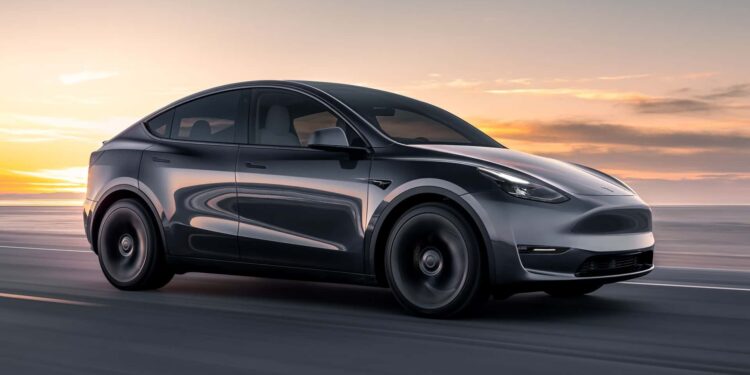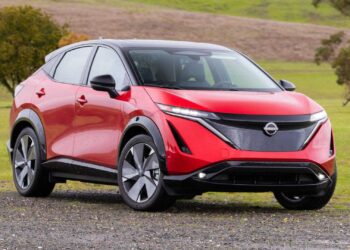In 2023, the Tesla Model Y was the best-selling car in the world. It’s a stellar electric crossover and a top choice in that category, but some buyers don’t want a Tesla. That’s okay, though. There are many strong contenders in the electric crossover category these days, so if you don’t want to buy a Tesla, the good news is that you have options now.
This wasn’t the case when the Model Y launched years ago, but since its debut, many automakers have stepped up with competing products. None of them will dethrone the Model Y atop the best-selling podium, but some competitive vehicles are better than the Y in some ways.
This post will start with the Model Y and what makes it stand out. It will then present options that include the Hyundai Ioniq 5, Kia EV6, Ford Mustang Mach-E, Chevrolet Equinox EV, and Polestar 4. Each vehicle has its strengths and weaknesses, but it’s likely you’ll find at least one that meets your needs.
Perhaps now is not the right time to buy for you. That’s okay, too. The future is full of exciting, upcoming EVs. So, buy when the time is right and when the car you want is available.
Tesla Model Y Specs: Why It’s Tough To Beat

The Tesla Model Y seems to be the perfect vehicle for today’s car buyers: it’s a practical and roomy crossover, looks like a sporty coupe-like fastback, and has lots of performance and range. It wasn’t an accident that it became 2023’s global best-seller, surpassing even the ubiquitous combustion-engined Toyota RAV4.
It has a starting price of $44,990 for the Long-Range Rear-Wheel Drive variant that goes 320 miles on one charge and sprints to 60 mph in 6.5 seconds. The $47,990 all-wheel-drive Long-Range Dual Motor lowers the range to 308 miles but adds more power and drops the acceleration time to 4.8 seconds. The Model Y Performance costs $51,490 and sacrifices some range (279 miles EPA) in favor of a 3.5-second time to 60 mph.

Built on the same E-GMP platform as the Ioniq 6, the Hyundai Ioniq 5 is one of the most popular Model Y alternatives. The base $41,800 Standard Range model has 168 hp and 220 miles of range, which isn’t much, so you have to get the versions with the larger battery pack to drive further on one charge.
The least you’ll pay for one is $45,850, and you’ll get 225 hp and 303 EPA miles of range. Adding a second costs $3,500 extra and ups the power to 320 hp but lowers the range to 260 miles. There’s also the bonkers range-topping $66,100 Ioniq 5 N, which allows you to shift fake gears and listen to a simulated engine, but it’s also blistering in a straight line and fun around the bends (and a track).

Although the Kia EV6 shares mechanical similarities with the Ioniq 5 and Ioniq 6, it boasts a unique appearance akin to a futuristic rally car on stilts. It provides a more dynamic driving experience compared to its Hyundai counterparts. The base model costs under $43,000 and has a 58 kWh battery with 232 miles of range.
You will have to pay at least $45,590 to get the larger 77.4 kWh battery pack, which gives you 310 miles and ups the power from 168 hp to 225 hp. The $49,850 Long Range AWD model adds a second motor on the front axle for 320 hp combined, but the range drops to 282 miles. The hot 576-hp EV6 GT costs $61,600, and it can accelerate to 60 mph in 3.4 seconds, but it’s also the lowest-range model, with 206 miles on one charge.

Ford makes one of the more fun-to-drive electric crossovers, the Mustang Mach-E. It might not look like it, but it handles well (to the detriment of ride quality), providing some justification for using the Mustang nameplate. It also has a great interior with lots of space and decent range.
The Mach-E range kicks off at $41,995; you get 250 miles of range and 267 horsepower from a single rear-mounted electric motor. Upgrade to the Extended Range battery pack for $45,990; the range goes up to 320 miles. The drive unit gets more power to compensate for the heavier battery and still delivers a similar 6.1-second benchmark sprint time. At the top of the Mach-E range sits the $60,900 Rally model, which gets more power and allows you to have fun sliding around a dirt road.

After our first drive, we liked the Chevrolet Equinox EV a lot. We liked its breadth of capabilities and how normal it felt to drive. With a starting price of $34,995, it’s also pretty affordable, and you get a lot of car for the money. The range is pretty impressive, too.
The base front-wheel-drive model is rated up to 319 miles on a single charge, and if you go for all-wheel drive, that drops to 285 miles. The dual-motor 2LT Equinox EV, the pick of the range, will cost $43,295. The price goes up to $46,795 for the top 3RS variant.

Polestar wants to make a splash with the Polestar 4 crossover. Its coupe-like rear end resembles the Model Y and Mach-E in terms of body style, but it’s unusual because it doesn’t have a rear window. For $54,900, you get the base single-motor long-range model, which has 272 hp and 300 miles of EPA range.
Opting for all-wheel drive will drive the price to $62,900 and double the power to 544 hp. The acceleration time to 60 mph drops from 6.9 seconds to 3.7 seconds, but so does the range, which is 30 miles lower than in the single-motor variant.
InsideEVs contributing writer Andrei Nedelea contributed a significant amount of content to this story.









